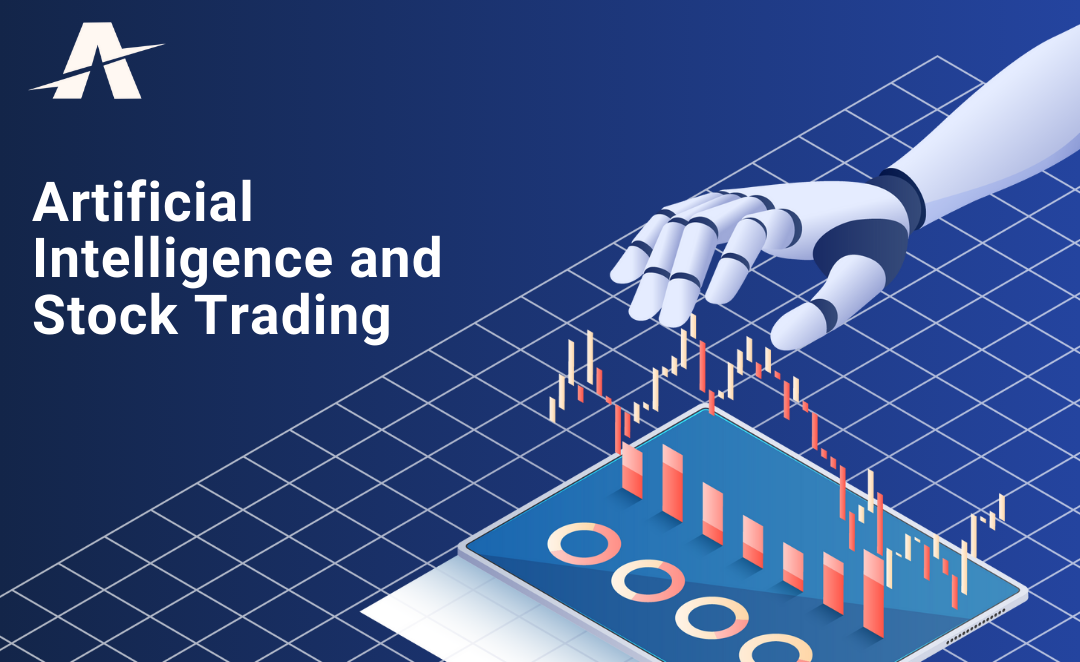Top 10 Tips For Optimizing Computational Resources For Ai Stock Trading From Penny To copyright
The optimization of computational resources is essential for AI stock trades, particularly when dealing the complexities of penny shares and the volatility of the copyright market. Here are 10 suggestions to optimize your computational power.
1. Cloud Computing Scalability:
Utilize cloud platforms like Amazon Web Services or Microsoft Azure to scale your computing resources as you need them.
Why cloud computing services provide flexibility in scaling up or down depending on the volume of trading and the complex models and data processing needs.
2. Choose high-performance hardware for real-time processing
Tip Invest in high-performance equipment, such as Graphics Processing Units(GPUs) or Tensor Processing Units(TPUs), to run AI models efficiently.
Why GPUs and TPUs greatly speed up the training of models and real-time data processing vital for quick decision-making in high-speed markets like copyright and penny stocks.
3. Improve data storage and accessibility speed
TIP: Look into using efficient storage options such as SSDs or cloud-based services for rapid retrieval of information.
The reason: AI-driven decision-making requires immediate access to historical market data and real-time data.
4. Use Parallel Processing for AI Models
Tips: Make use of parallel computing to accomplish many tasks at the same time like analyzing various currencies or markets.
Parallel processing can be a very powerful instrument for data analysis and training models, particularly when dealing with large amounts of data.
5. Prioritize edge computing for trading with low latency
Tip: Use edge computing techniques that make computations are performed closer to the data source (e.g. Data centers or exchanges).
The reason: Edge computing decreases the amount of latency that is crucial for high-frequency trading (HFT) and copyright markets, where milliseconds are crucial.
6. Improve the efficiency of the algorithm
Tips to improve the efficiency of AI algorithms in their training and execution by fine-tuning. Techniques such as pruning (removing unimportant parameters from the model) can be helpful.
Why? Optimized models run more efficiently and require less hardware, while still delivering performance.
7. Use Asynchronous Data Processing
Tip. Utilize synchronous processes in which AI systems process data independently. This will allow real-time trading and analytics of data to take place without delays.
Why: This method minimizes the amount of downtime and boosts system performance, particularly important in fast-moving markets like copyright.
8. Manage the allocation of resources dynamically
Tip : Use resource allocation management tools which automatically allocate computing power according to the workload.
Why is this? Dynamic resource allocation permits AI models to run smoothly without overburdening systems. The time to shut down is decreased in high-volume trading times.
9. Make use of light-weight models for real-time Trading
TIP: Choose machine-learning models that can quickly make decisions based on real-time data, without requiring large computational resources.
Why: In the case of trading in real time (especially when dealing with copyright, penny shares, or even copyright), it's more important to take quick decisions instead of using complicated models, as the market can move quickly.
10. Optimize and monitor the cost of computation
Tip: Monitor the computational cost to run AI models on a continuous basis and optimize to reduce cost. Cloud computing pricing plans such as reserved instances and spot instances are based on the needs of your business.
Reason: A well-planned use of resources means you won't be spending too much on computational resources. This is especially important when dealing with penny stock or volatile copyright markets.
Bonus: Use Model Compression Techniques
It is possible to reduce the size of AI models by using model compression methods. These include quantization, distillation, and knowledge transfer.
Why? Compressed models maintain efficiency while also being resource efficient. This makes them perfect for real time trading when computational power is limited.
Implementing these tips will help you optimize computational resources in order to build AI-driven platforms. It will guarantee that your trading strategies are efficient and cost-effective, regardless whether you trade penny stocks or copyright. View the top rated ai in stock market examples for site recommendations including best ai penny stocks, stock analysis app, best ai stocks, coincheckup, ai for trading stocks, copyright ai, ai financial advisor, best ai stock trading bot free, ai investing app, ai trade and more.

Top 10 Tips To Monitoring Market Sentiment With Ai For Prediction, Stock Pickers And Investments
Monitoring market sentiment is an essential element of AI-driven investments, predictions, and selections of stocks. Market sentiment is an influential factor that can influence stock prices and the overall direction of the market. AI-powered software can analyze huge quantities of data in order to find the mood signals. Here are 10 top AI strategies for monitoring the mood of markets to help select stocks:
1. Use Natural Language Processing (NLP) for Sentiment Analysis
Tips: Make use of Artificial Intelligence-driven Natural Language Processing (NLP) techniques to analyze text from news articles, financial blogs, earnings reports as well as social media sites (e.g., Twitter, Reddit) to gauge sentiment.
Why: NLP is a powerful tool which allows AI to understand and quantify the emotions, opinions, or market sentiment expressed through non-structured texts. This helps traders make better decisions when trading.
2. Monitor Social Media and News to get updates in real Time
Tips: Use AI to scrape data live from news sites, social media and forums. This will allow you to track changes in sentiment in the context of markets or stocks.
Why? Social media and news can affect market movements quickly, particularly for assets that are volatile, such as the penny stock market and copyright. Real-time sentiment analysis can be used to make short-term decisions.
3. Integrate Machine Learning to predict sentiment
Tip: Use machine-intelligence algorithms to forecast the trends in market sentiment by analyzing historical data and sentiment signals.
The reason: AI learns patterns in sentiment data, and can analyze historical stock behaviour to anticipate shifts in sentiment that can be a precursor to major price movements. This gives investors a competitive edge.
4. Combining Sentiment and Technical Fundamental Data
TIP: Combine sentiment analysis with traditional technical indicators, such as moving averages and RSI and fundamental metrics, such as P/E ratios, earnings reports, to create a more holistic investment strategy.
The reason is that sentiment adds an additional layer of information to the technical and fundamental analysis. Combining these two elements enhances the AI's capacity to make more accurate and balanced stock forecasts.
5. Be aware of the sentiment in Earnings Reports or during Key Events
Tip: Use AI to track changes in sentiment in the days and weeks prior to major events, such as earnings reports product launches, or regulatory announcements, as they can profoundly affect the price of stocks.
Why: These events often trigger significant changes in the market sentiment. AI can spot mood swings quickly, and provide investors with insights into potential stock movement in response to these triggers.
6. Use Sentiment Arrays as a way to identify current market trends
Tips - Group sentiment data by clusters to identify market trends and segments.
What is the reason? Sentiment clustering permits AI to detect emerging trends that might not be evident from individual stocks or small data sets, helping to find industries or sectors with changing investor interest.
7. Use Sentiment Scoring to Stock Evaluation
Tip - Develop sentiment scores Based on the analysis of news, forum posts and social media. Use these scores for filtering and ranking stocks based on their positive or negative feelings.
Why: Sentiment scores offer an accurate measure of the sentiment of investors towards an individual stock, which can lead to better decision-making. AI can refine the scores over time in order to improve predictive accuracy.
8. Track Investor Sentiment on a variety of Platforms
Tip - Monitor sentiment across all platforms (Twitter Financial news websites, Reddit, etc.). Examine the sentiments of various sources, and you'll gain a more comprehensive view.
The reason: sentiment can be affected by a specific platform. A look at investor sentiment across different platforms will give a more complete and balanced picture.
9. Detect Sudden Sentiment Shifts Using AI Alerts
Set up AI-powered alarms that will alert you to significant shifts in sentiment within a particular stock or sector.
What's the reason? abrupt changes in the mood like an increase in negative or positive comments, could be accompanied by price movements that are rapid. AI alerts enable investors to respond quickly and prior to the market price changes.
10. Examine trends in sentiment over long periods of time
Tip: Make use of AI for long-term sentiment analysis of stocks, sectors, or even the entire market (e.g., bullish and bearish sentiments over months or years).
The reason is that long-term sentiment patterns are an aid in identifying stocks that have a strong chance for the future or those that may signal emerging risks. This outlook is in addition to the mood signals of the present and could guide strategies for the long term.
Bonus Combining Economic Indicators and Sentiment
Tip Use sentiment analysis in conjunction along with macroeconomic indicators like GDP growth, inflation, or employment statistics to determine how broader economic conditions affect market sentiment.
The reason: Economic conditions frequently affect investor sentiment. This, in turn, can affect the price of stocks. AI can provide more insight into market dynamics through the linkage of economic indicators and sentiment.
Investors can utilize AI to interpret and monitor market sentiments by implementing these tips. This can help them to make more accurate and more timely predictions and make better investment decision. Sentiment Analysis adds an additional layer of instant insight that enhances traditional analysis. It can help AI stockpickers to navigate complicated market situations with greater accuracy. See the recommended read this on ai for trading stocks for site examples including ai investing platform, ai for investing, ai sports betting, ai stock, using ai to trade stocks, penny ai stocks, best stock analysis website, best ai trading bot, ai trade, coincheckup and more.

Comments on “20 Best Ideas For Deciding On Ai Stock Trading Apps”